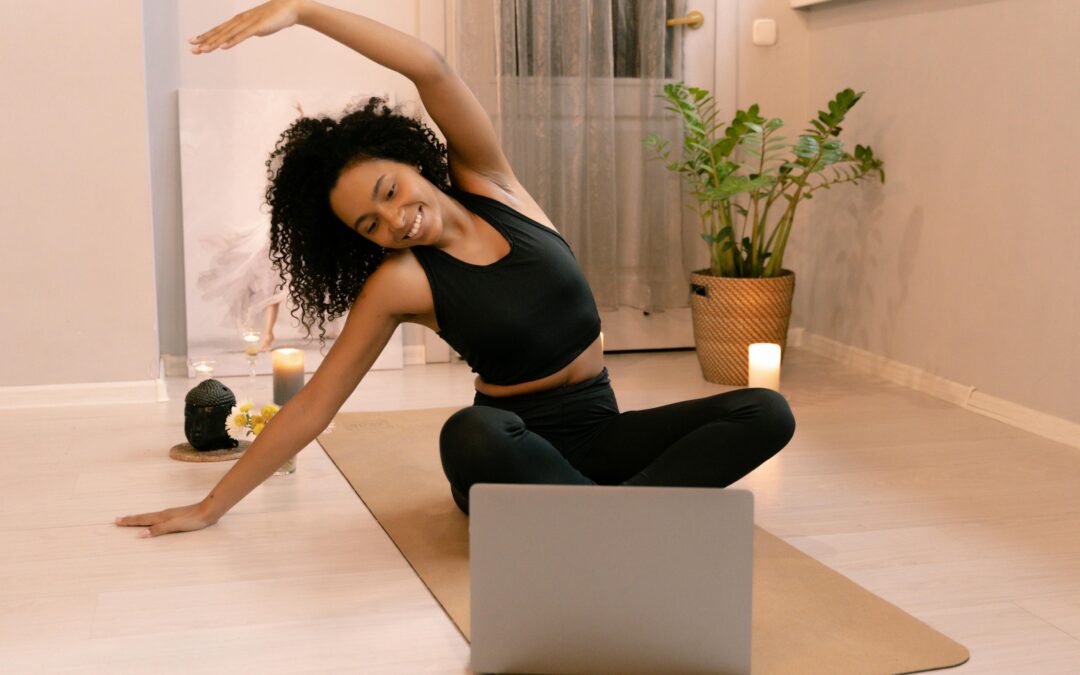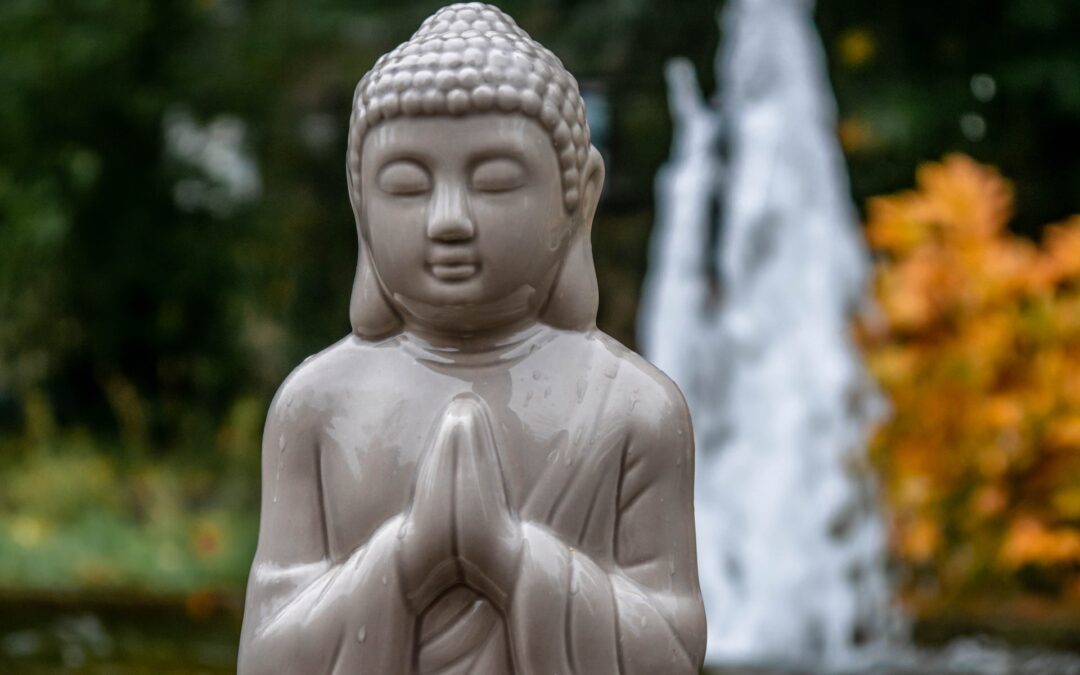
Self-Care, Wellness
About Mindfulness
At its core, mindfulness is the practice of bringing our full attention and awareness to the present moment, without judgment or attachment to the past or future. It involves tuning into our thoughts, feelings, sensations, and surroundings with openness, curiosity, and acceptance, allowing us to fully experience life as it unfolds moment by moment.
Why is the Practice of Mindfulness Such a Popular Topic?
The topic of practicing mindfulness has become more popular in recent years due to several factors:
- Increased Awareness of Mental Health: As societal awareness of mental health issues has grown, there has been a greater emphasis on holistic approaches to well-being, including mindfulness practices. Mindfulness has been recognized as a valuable tool for managing stress, anxiety, depression, and other mental health challenges, leading to increased interest and adoption.
- Scientific Research and Evidence: A growing body of scientific research has highlighted the benefits of mindfulness for mental and emotional well-being. Studies have shown that mindfulness practices can reduce stress, improve mood, enhance cognitive function, and promote overall resilience. This empirical evidence has contributed to the credibility and popularity of mindfulness as a therapeutic tool.
- Mainstream Acceptance and Integration: Mindfulness practices, such as meditation and mindfulness-based therapies, have gained acceptance within mainstream healthcare, education, and corporate settings. Mental health professionals, educators, and employers are increasingly incorporating mindfulness into their programs and initiatives to promote wellness, resilience, and performance.
- Technological Advances and Accessibility: Advances in technology, including smartphone apps, online courses, and digital platforms, have made mindfulness practices more accessible and convenient for people of all ages and backgrounds. Mobile apps such as Headspace, Calm, and Insight Timer offer guided meditations, mindfulness exercises, and relaxation techniques that can be accessed anytime, anywhere.
- Stressful and Fast-Paced Lifestyles: In today’s fast-paced and interconnected world, many people experience high levels of stress, burnout, and overwhelm. Mindfulness offers a counterbalance to the demands of modern life by promoting presence, awareness, and self-care. As individuals seek strategies to cope with stress and cultivate resilience, mindfulness has emerged as a popular and effective approach.
- Cultural Influence and Popular Media: Mindfulness has gained visibility and popularity through its portrayal in popular media, including books, articles, documentaries, and films. Celebrities, athletes, and public figures have also endorsed mindfulness practices, raising awareness and normalizing their use as tools for personal growth and well-being.
- Desire for Meaning and Connection: In an increasingly digitized and impersonal world, many people are seeking deeper meaning, purpose, and connection in their lives. Mindfulness offers a pathway to greater self-awareness, emotional intelligence, and spiritual fulfillment, helping individuals cultivate a deeper sense of presence, gratitude, and compassion.
Overall, the increasing popularity of mindfulness reflects a broader cultural shift toward prioritizing mental and emotional well-being, self-care, and holistic approaches to health and happiness. As mindfulness continues to gain momentum, its impact on individual and societal well-being is likely to grow, shaping the way we approach personal growth, relationships, and fulfillment in the years to come.
The Benefits of Mindfulness
The practice of mindfulness offers a multitude of benefits for our physical, mental, and emotional well-being, including:
- Reduced stress, anxiety, and depression
- Improved focus, concentration, and cognitive function
- Enhanced self-awareness and emotional regulation
- Increased resilience and capacity to cope with challenges
- Greater sense of peace, contentment, and fulfillment in life
Practical Tips for Developing Mindfulness
- Start with Breath Awareness: Begin your mindfulness practice by bringing your attention to your breath. Notice the sensation of the breath as it enters and leaves your body, without trying to control or manipulate it. Use the breath as an anchor to the present moment whenever your mind starts to wander.
- Practice Mindful Eating: Slow down and savor each bite of your meals, paying attention to the taste, texture, and aroma of the food. Notice the sensations of chewing and swallowing, and cultivate gratitude for the nourishment your food provides.
- Engage in Daily Activities Mindfully: Turn routine activities such as washing dishes, taking a shower, or walking the dog into opportunities for mindfulness. Focus on the sensations, movements, and sounds involved in each activity, and bring your full attention to the present moment.
- Cultivate Gratitude: Take time each day to reflect on the things you’re grateful for in your life, whether it’s the beauty of nature, the love of family and friends, or the simple pleasures of daily living. Cultivating gratitude helps shift your focus from what’s lacking to what’s abundant in your life.
- Practice Loving-Kindness Meditation: Dedicate time each day to practicing loving-kindness meditation, in which you extend feelings of compassion, love, and goodwill towards yourself and others. This practice helps cultivate empathy, kindness, and connection with yourself and the world around you.
- Embrace Moments of Stillness: Create moments of stillness and silence throughout your day, whether it’s through meditation, prayer, or simply pausing to take a few deep breaths. Allow yourself to rest in the spaciousness of the present moment and reconnect with your inner peace.
By incorporating mindfulness into your daily life, you can cultivate greater clarity, calmness, and compassion and experience a profound shift in how you relate to yourself, others, and the world around you.

Creative, Self-Care, Wellness
What is Self-Expression?
Self-expression is the act of communicating one’s thoughts, feelings, and experiences in a way that is authentic and true to oneself. It encompasses a wide range of creative outlets, including art, music, writing, dance, poetry, and more. Through self-expression, we give voice to our innermost selves, sharing our unique perspectives and emotions with the world.
Why is Self-Expression Essential?
Self-expression is essential for several reasons:
- Authenticity: By expressing ourselves authentically, we honor our true selves and cultivate a deeper sense of authenticity in our lives.
- Emotional Release: Self-expression serves as a powerful outlet for releasing pent-up emotions, relieving stress, and processing difficult experiences.
- Connection: Sharing our stories, art, and experiences with others fosters connection, empathy, and understanding, strengthening our relationships and building a sense of community.
- Self-Discovery: Through creative expression, we explore our inner worlds, uncovering hidden truths and discovering new facets of ourselves along the way.
How Does Self-Expression Contribute to Self-Care?
Self-expression is an integral component of self-care practices that nourish our minds, bodies, and spirits. Here’s how:
- Emotional Well-Being: Engaging in creative activities allows us to express and validate our emotions, promoting emotional well-being and resilience.
- Stress Relief: Immersing ourselves in creative pursuits provides a welcome distraction from life’s stressors, helping to reduce anxiety and promote relaxation.
- Self-Exploration: Through self-expression, we gain insight into our thoughts, feelings, and desires, deepening our self-awareness and promoting personal growth.
- Joy and Fulfillment: Creating art, music, or writing that resonates with our souls brings us joy and a sense of fulfillment, nurturing our spirits and enhancing our overall quality of life.
Incorporating Self-Expression Into Your Self-Care Routine
Here are some simple ways to incorporate self-expression into your daily self-care routine:
- Set aside time each day for creative activities that bring you joy, whether it’s painting, journaling, dancing, or playing music.
- Experiment with different forms of self-expression to discover what resonates with you most deeply.
- Join a creative community or workshop to connect with others who share your interests and passions.
- Practice self-compassion and embrace imperfection in your creative endeavors, focusing on the process rather than the outcome.
Remember, self-expression is a deeply personal and individual journey. Embrace your unique voice, honor your inner truths, and allow your creativity to guide you on the path to self-discovery and well-being.

Coaching, Self-Development
Are you frittering away your day?
It sounds like a funny thing to ask, like something your grandmother might say, but think about it. When we become caught up in small, nonsensical tasks where we spend the day spinning our wheels, it could very well be said that we’re frittering. Is this something you really want to be doing? In a world filled with distractions and endless to-do lists, it’s easy to fall into the trap of busyness without purpose. But imagine what could happen if you redirected that energy towards activities that actually move you closer to your dreams.
Instead of succumbing to the allure of small, meaningless tasks, why not prioritize your time and focus on what truly matters? It’s time to shift gears and start getting Important Stuff Done. It’s time to get out of your own way and take charge of your life. Here are some quick tips to help you make every moment count:
-
Set Clear Goals: Begin by defining success for yourself. Whether you’re advancing in your career, pursuing a passion project, or improving your health, clarity on your objectives will guide your actions.
-
Prioritize Tasks: Not all tasks are created equal. Identify the activities that align most closely with your goals and tackle them first. This ensures that you’re making progress on what matters most rather than getting bogged down in trivial pursuits.
-
Minimize Distractions: Take control of your environment to minimize distractions. Turn off notifications, designate specific times for checking email and social media, and create a workspace that fosters focus and productivity.
-
Practice Time Management: Efficient use of time is essential for accomplishing your goals. Break your day into manageable chunks, schedule time for important tasks, and avoid multitasking, which can lead to decreased productivity and increased stress.
-
Embrace Strategic Procrastination: Sometimes, procrastination can be a strategic tool. Instead of avoiding important tasks altogether, prioritize them over less critical activities. Procrastinating on less important tasks creates space to focus on what truly matters.
-
Delegate and Outsource: You don’t have to do it all yourself. Delegate tasks that others can handle more effectively, freeing up your time and energy for high-impact activities. Whether you hire a virtual assistant or enlist the help of a colleague, don’t be afraid to ask for support.
-
Celebrate Progress: Recognize and celebrate your achievements along the way. Break your goals into smaller milestones and acknowledge each as you reach them. This boosts morale and reinforces your commitment to achieving your dreams.
By implementing these strategies, you can stop frittering away your days and start making meaningful progress toward your goals. Remember, every moment is an opportunity to take charge of your life and create the future you desire. So why wait? Start getting Important Stuff Done today!

Self-Care, Wellness
When it comes to productivity, we often focus solely on sharpening our mental faculties and powering through tasks with sheer determination. However, we tend to overlook the crucial role that our physical well-being plays in our ability to stay focused, motivated, and energized throughout the day. Neglecting our bodies can lead to decreased energy levels, feelings of sluggishness, and a lack of motivation to tackle our workload.
To reclaim your productivity and revitalize your body, it’s essential to prioritize self-care and implement strategies to recharge effectively. Here are five popular and effective ways to recharge your body and enhance your productivity:
- Prioritize Sleep: Adequate sleep is the foundation of a healthy body and a sharp mind. Yet, in today’s fast-paced world, sleep often takes a back seat to work and other responsibilities. Aim for 7-9 hours of quality sleep each night to allow your body to rest, repair, and recharge. Establish a consistent sleep schedule, create a relaxing bedtime routine, and optimize your sleep environment for maximum comfort and restfulness.
- Nourish Your Body: Proper nutrition is fuel for both body and mind. To maintain optimal energy levels and mental clarity, prioritize nutrient-rich foods that sustain energy throughout the day. Incorporate a balanced diet rich in fruits, vegetables, lean proteins, whole grains, and healthy fats. Stay hydrated by drinking plenty of water throughout the day and limiting your consumption of caffeine and sugary beverages, which can lead to energy crashes and dehydration.
- Move Your Body: Regular physical activity is essential for physical health and plays a crucial role in boosting mood, reducing stress, and enhancing cognitive function. Incorporate movement into your daily routine by engaging in activities you enjoy, whether it’s going for a brisk walk, practicing yoga, or hitting the gym. Aim for at least 30 minutes of moderate exercise most days of the week to reap the benefits of improved energy, focus, and productivity.
- Treat yourself to a massage: Many business owners spend a significant part of their day in front of a computer. Sitting all day like this makes it easy to overwork the muscles in your neck and shoulders. That’s why getting a shoulder or neck massage can be helpful. Besides helping your muscles, a massage is an excellent way to increase your blood circulation; getting one will make you feel more alert. It’s also helpful if you suffer from chronic pain due to a medical condition like fibromyalgia or arthritis. You can opt for a day trip to the local spa or find a massage therapist online through a website like the American Massage Therapy Association (AMTA).
- Go on a mini-retreat. A retreat is a chance to withdraw from everything around you. It gives you the space to reflect on your priorities and sort through your emotions. A mini-retreat might be just what your body needs if you’ve been experiencing a difficult time, such as the diagnosis of an illness, the loss of a loved one, or another catastrophe. Your mini retreat doesn’t have to last long. You can choose to have your own private retreat for just a few hours. Pick a place or a series of places you can go where you feel safe and comfortable. For some people, a safe place might be a library, church, or museum.
Journal Your Thoughts
- What are some warning signs that you’re about to burn out? What are some activities that will recharge you and prevent burnout?
- What’s your favorite way to re-charge?
- How often do you schedule time to recharge? How can you work ‘recharge time when you don’t get into your day?
Remember that your body is like your car in many ways. It can get you to your destination but needs regular care and maintenance to operate well.

Creative, Entrepreneurs, Self-Care, Wellness
It’s difficult to stay productive when your brain is buzzing. You have so many ideas and thoughts in your head that it’s tough to focus on your to-do list. But you don’t have to let the mental noise ruin your productivity. You can quiet your brain by doing a few simple things, and then you’ll be able to return to work with focus and clarity.
Start a journal.
When your mind is buzzing, try writing down your thoughts in a journal. This exercise will help you empty your mind so your brain can focus again. Once you’ve finished with your thoughts, write about the benefits that finishing your tasks for the day will bring you. By writing about your tasks, you’ll be able to sort through and pick which ones are the most important to you.
Try coloring.
Coloring for half an hour is a great way to let go of mental clutter. Allow your thoughts to come as you focus on the design of your coloring sheet. Besides helping calm your brain, coloring also allows you to get into a creative mindset. That makes it a great activity if you’re trying to devise a solution to a problem or seeking inspiration for a project you’re working on. If you dislike coloring, you might try doodling instead. You’ll still get the same benefits as coloring.
Practice yoga.
Yoga is another great way to calm your mind. It’s effective because it lets you fully tune with your body. If other thoughts try to interrupt you, push them away and focus on your current pose. You don’t have to buy an expensive DVD to practice yoga. There are many yoga videos available for free on YouTube.
Take a walk.
Walking, even briefly, is helpful when your brain is buzzing. Not only does walking get you away from your desk, it’s also a great way to relieve stress. You can powerwalk or jog if you prefer to do it at a leisurely pace. But be choosy with your location. Busy streets can make it hard for you to focus and relax. Instead, opt for quiet streets or walk at a local park that you enjoy visiting.
Meditate.
Meditation is a quick way to calm your mind and body. Get into a comfortable position and focus on your breathing. Take slow breaths and feel your body move as you inhale and exhale. Release any conscious thoughts as they come to you. If you’re new to meditation, choosing an object or word to focus on during your session can be helpful.
Take a hot bath.
A hot bath is the perfect way to calm an overactive brain. Besides helping you relax, a warm bath can also improve circulation and ease tense muscles. After you’re finished soaking, try taking a quick shower with lukewarm or cold water. This wakes your body up and energizes you so that you’re ready to tackle the rest of your to-do list.
Journal Your Thoughts
1. When you’re overwhelmed, what helps you relax the most?
2. Do you find yourself frequently flitting from task to task without accomplishing anything? What do you think is causing this?
3. How can you create a system that lets you capture and organize your ideas?
When your brain is buzzing, don’t try to work despite it. Instead, acknowledge how you feel right now and try one of the exercises listed above. Then, you’ll be able to return to work with a focused mindset.





